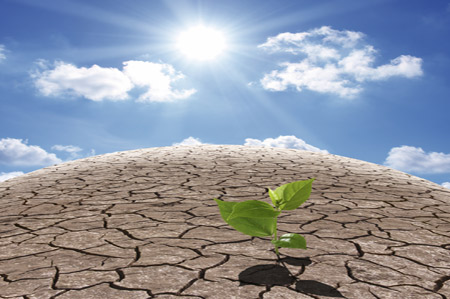 (Wall Street Journal) – The El Niño weather pattern, while weakening, continues to hurt crop farmers as well as cattle ranchers across the Asia-Pacific region with its hot and dry conditions.
(Wall Street Journal) – The El Niño weather pattern, while weakening, continues to hurt crop farmers as well as cattle ranchers across the Asia-Pacific region with its hot and dry conditions.
Global temperatures in February were 2.43 degrees Fahrenheit above the average temperature for that month in the period from 1951-1980—a yardstick the National Aeronautics and Space Administration uses to understand recent temperatures—according to data released Saturday by the agency.
“Hot temperatures will persist for a few months after El Niño peaks, so this is to be expected. But underneath the impact of El Niño there is an underlying global warming trend, so the temperature keeps going up,” said Agus Santoso, a senior research associate at the Climate Change Research Center at the University of New South Wales.
The El Niño phenomenon began in the first half of 2015, peaked in December and has started to recede. But the phenomenon will continue to affect weather patterns as it breaks down. Normal conditions are expected in the second half of 2016, according to weather bureaus in Australia, Japan and the U.S.
The weather pattern occurs when winds in the equatorial Pacific slow down or reverse direction. That causes waters to warm over a vast area, which in turn can upend weather around the world. The severity of the phenomenon is measured by ocean temperatures and atmospheric convection activities.
An El Niño typically reduces rainfall across parts of Southern and Southeast Asia, while at the same time bringing precipitation to the western U.S. and parts of South America.
Vietnam has been one of the worst-hit countries in the region.
The country’s Ministry of Agriculture and Rural Development estimates ongoing drought and salt water intrusion has affected 343,476 acres of rice in the Mekong Delta since late last year, reducing rice productivity by 30%-70%. The Mekong Delta, located at the southern tip of Vietnam, is the country’s largest rice-growing area.
“The drought and the intrusion of salt water are serious this year, causing damages to the socio-economy of nine provinces in the Mekong Delta,” Minister of Agriculture and Rural Development Cao Duc Phat said in the statement.
The dry conditions in the Mekong Delta may last until June or even later in the year, Mr. Phat warned.
The dry conditions are painful elsewhere in Southeast Asia.
Malaysia, Indonesia and Thailand also saw low rainfall in February, worsening an already pessimistic outlook for their sugar, rice and palm oil production.
‘If you look at a precipitation map for the last few months, it is so dry all over the region. We’ve seen another bout of El Niño-related weather, and it is very, very strong,” said Aurelia Britsch, Asia-Pacific agribusiness analyst at BMI Research.
Ms. Britsch has downgraded production forecasts for rice, sugar and coffee in the region. She expects rice production in Vietnam to decline for the first time since 2001.
Ms. Britsch noted that while rice prices have yet to be hit by lower production, she expects prices to start rising as supplies tightened across the market. Global rice prices in February were trading down 10.5%, according to the Food and Agriculture Organization of the United Nations’ rice price index.
Palm oil has been one of the best performing commodities over the last six months, with prices up nearly 40% since last August due to concerns about tightening supplies. With dry conditions continuing, prices will likely go up further, analysts say.
“We do expect palm oil to rally further into the end of the year and into 2017” as production continues to be hurt by the continuing dry weather, said Barnabas Gan, commodities economist at OCBC Bank. He expects palm oil prices to reach 2650 Malaysian ringgit a ton before the end of the year. The benchmark 3-month contract closed at 2594 ringgit a ton on the Bursa Malaysia Monday.
Only parts of Australia have been damaged by El Niño.
Though February was wet season in the north, some cattle farmers report less rain than normal, forcing them to consider sending more livestock for slaughter than they otherwise would have because of less grass.
John Stoate, who has around 25,000 cattle on a 741,316-acre ranch in the northwest coast of Australia, said he and his neighbors are facing challenges because rain is significantly below normal levels.
“We are struggling a bit for feed and have to make decisions about what you sell and what you keep,” he said.




